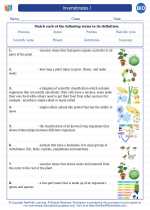Cellular Injury
Cellular injury refers to the damage that occurs to cells as a result of a variety of insults, including physical, chemical, infectious, and immunological factors. Understanding the mechanisms and consequences of cellular injury is crucial for understanding various diseases and pathological conditions.
Types of Cellular Injury
There are several types of cellular injury, including:
- Physical injury: This type of injury includes mechanical trauma, temperature extremes, and radiation damage.
- Chemical injury: Chemical agents such as drugs, toxins, and pollutants can cause cellular injury.
- Infectious injury: Pathogens such as bacteria, viruses, and parasites can directly damage cells or trigger immune responses that lead to cellular injury.
- Immunological injury: Autoimmune reactions and hypersensitivity responses can lead to cellular injury.
Mechanisms of Cellular Injury
Cellular injury can occur through various mechanisms, including:
- Direct damage: Physical or chemical agents directly disrupt cellular structures and functions.
- Free radical formation: Reactive oxygen species can cause oxidative damage to cellular components.
- Impaired membrane permeability: Changes in membrane integrity can lead to disruptions in cellular homeostasis.
- Genetic damage: Mutagens can induce DNA damage, leading to cellular dysfunction or death.
- Apoptosis and necrosis: Cellular injury can trigger programmed cell death (apoptosis) or uncontrolled cell death (necrosis).
Consequences of Cellular Injury
Cellular injury can have various consequences, including:
- Altered cellular function: Injured cells may exhibit impaired metabolic, synthetic, or signaling activities.
- Cellular adaptation: Cells may undergo adaptive changes in response to injury, such as hypertrophy, atrophy, or metaplasia.
- Cellular death: Severe or irreparable injury can lead to cell death, either through apoptosis or necrosis.
- Tissue and organ damage: Cumulative cellular injury can lead to structural and functional changes at the tissue and organ levels, contributing to disease pathogenesis.
Study Guide
To effectively study cellular injury, consider the following key points:
- Understand the different types of insults that can cause cellular injury, including physical, chemical, infectious, and immunological factors.
- Learn the mechanisms through which cellular injury occurs, such as direct damage, free radical formation, membrane permeability changes, and genetic damage.
- Explore the consequences of cellular injury, including altered cellular function, adaptation, cell death, and tissue/organ damage.
- Review specific examples of cellular injury in the context of different diseases and pathological conditions.
- Consider the role of cellular injury in the development and progression of various diseases, and its implications for treatment and prevention strategies.
By mastering the concepts of cellular injury, you will gain a deeper understanding of the underlying mechanisms of disease and be better equipped to explore related topics in cell biology, pathology, and medicine.
.◂Biology Worksheets and Study Guides High School. Invertebrates
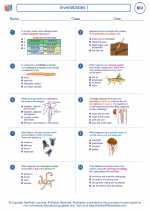
 Worksheet/Answer key
Worksheet/Answer key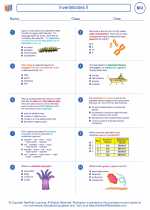
 Worksheet/Answer key
Worksheet/Answer key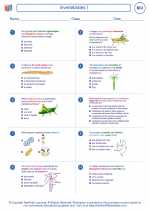
 Worksheet/Answer key
Worksheet/Answer key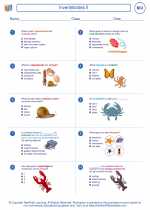
 Worksheet/Answer key
Worksheet/Answer key
 Worksheet/Answer key
Worksheet/Answer key
 Vocabulary/Answer key
Vocabulary/Answer key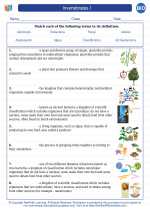
 Vocabulary/Answer key
Vocabulary/Answer key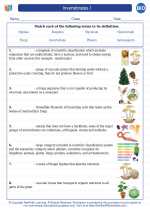
 Vocabulary/Answer key
Vocabulary/Answer key